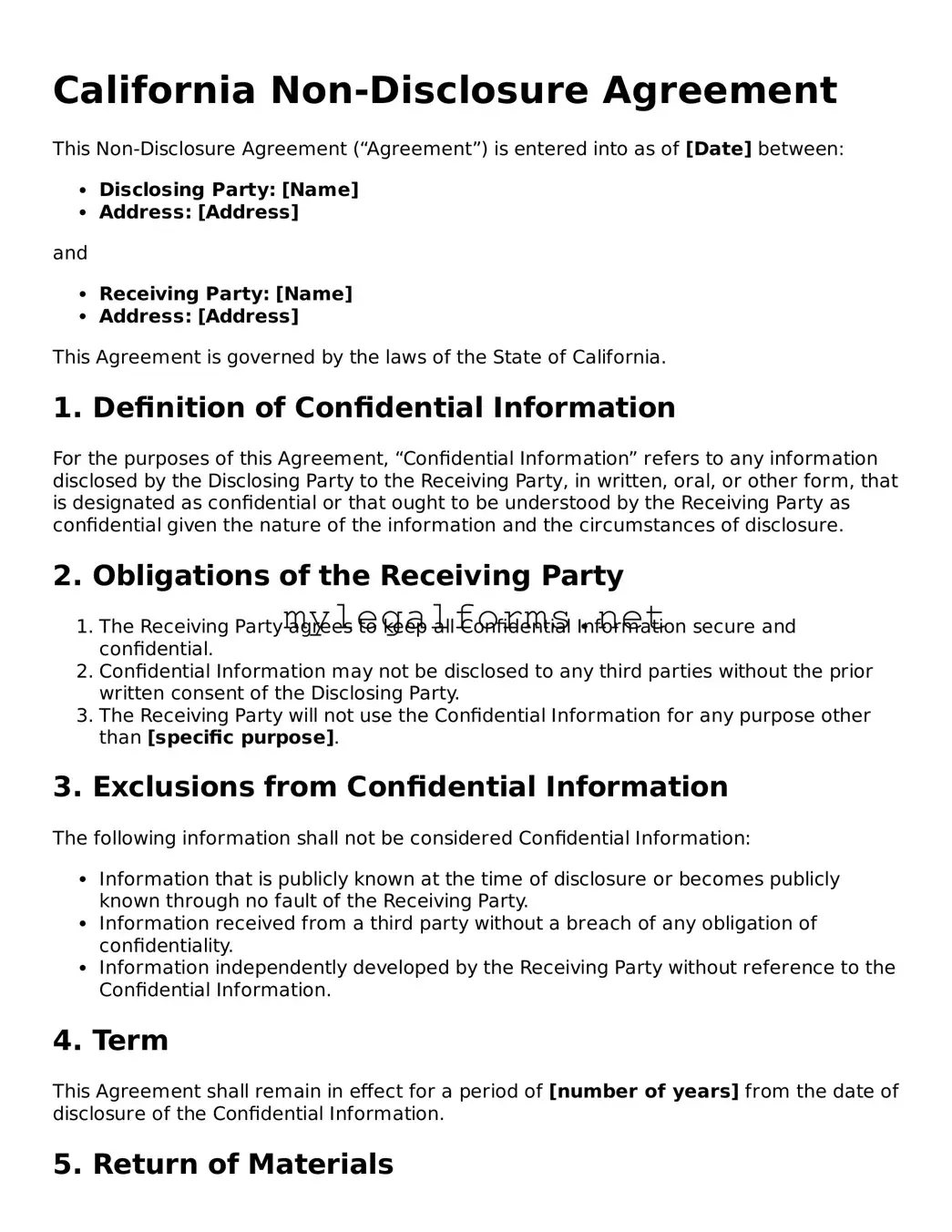California Non-Disclosure Agreement
This Non-Disclosure Agreement (“Agreement”) is entered into as of [Date] between:
- Disclosing Party: [Name]
- Address: [Address]
and
- Receiving Party: [Name]
- Address: [Address]
This Agreement is governed by the laws of the State of California.
1. Definition of Confidential Information
For the purposes of this Agreement, “Confidential Information” refers to any information disclosed by the Disclosing Party to the Receiving Party, in written, oral, or other form, that is designated as confidential or that ought to be understood by the Receiving Party as confidential given the nature of the information and the circumstances of disclosure.
2. Obligations of the Receiving Party
- The Receiving Party agrees to keep all Confidential Information secure and confidential.
- Confidential Information may not be disclosed to any third parties without the prior written consent of the Disclosing Party.
- The Receiving Party will not use the Confidential Information for any purpose other than [specific purpose].
3. Exclusions from Confidential Information
The following information shall not be considered Confidential Information:
- Information that is publicly known at the time of disclosure or becomes publicly known through no fault of the Receiving Party.
- Information received from a third party without a breach of any obligation of confidentiality.
- Information independently developed by the Receiving Party without reference to the Confidential Information.
4. Term
This Agreement shall remain in effect for a period of [number of years] from the date of disclosure of the Confidential Information.
5. Return of Materials
Upon termination of this Agreement, the Receiving Party agrees to return or destroy all materials containing Confidential Information at the request of the Disclosing Party.
6. No License
No license or other rights to the Confidential Information are granted to the Receiving Party under this Agreement.
7. Miscellaneous
This Agreement constitutes the entire understanding between the parties regarding the subject matter hereof and supersedes all prior discussions or agreements.
This Agreement may be amended only in writing signed by both parties.
IN WITNESS WHEREOF, the parties hereto have executed this Non-Disclosure Agreement as of the date first above written.
__________________________
Disclosing Party Signature
__________________________
Receiving Party Signature
